A guide to visiting Iceland | Open Road
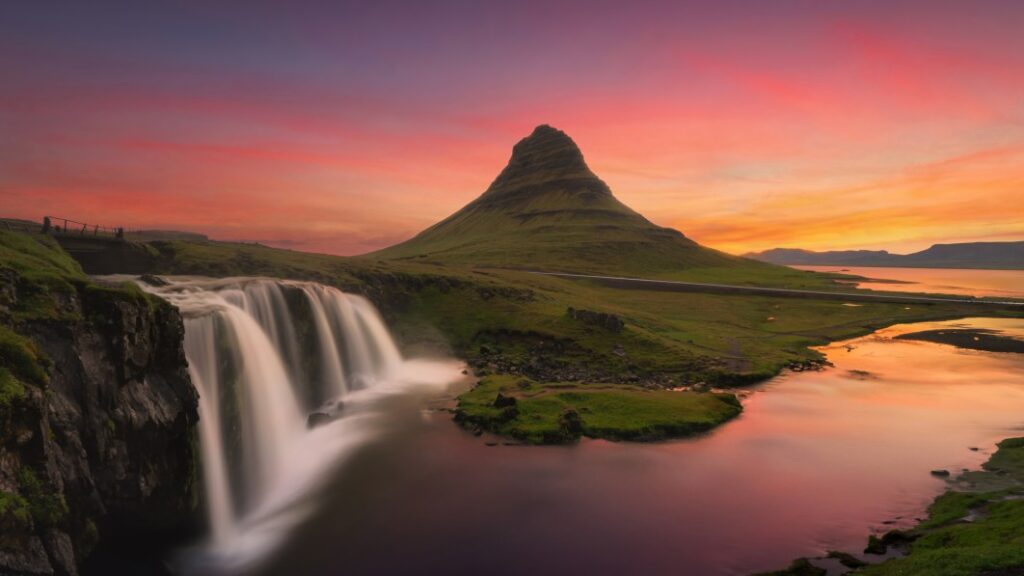
Autoblog may receive a share from purchases made via links on this page. Pricing and availability are subject to change.
If “see an active volcano” is on your bucket list, you better buy your ticket to Iceland right now. The island nation’s most recently formed volcano, Litli-Hrútur, has been erupting on the Reykjanes Peninsula since July 10 but it won’t last forever. There’s no better place to be if you’re yearning for an unforgettable adventure in a land of stunning landscapes and ethereal beauty. This magical country, often referred to as the “Land of Fire and Ice,” offers a diverse array of experiences that will leave you awe-inspired. Whether you’re a solo traveler seeking solitude in nature or a couple looking to create lasting memories together, Iceland has something for everyone. In this comprehensive guide, we’ll walk you through almost everything you need to know for a memorable Icelandic journey.
How to Get There: Flights to Iceland
For travelers from all over the United States, Iceland is just a flight away. While there are numerous airports to consider, keep an eye out for direct flights to Keflavík International Airport (KEF) from cities like Newark, Boston, Chicago, Washington, New York City, DC, Dallas, Denver, Detroit, Los Angeles, Minneapolis, Seattle, Orlando, and San Francisco. Keflavik airport, located near Reykjavík, serves as a gateway to your Icelandic adventure. With airlines offering competitive fares, it’s easier than ever to find a suitable flight that fits your schedule and budget, with flights from the U.S. averaging around $600-800 depending on your originating airport.
How to Get Around Iceland: Freedom of the Open Road
Once you arrive in Iceland, the best way to explore its wonders is by renting a car or a campervan. Enjoy the freedom of the open road as you traverse the country’s scenic landscapes at your own pace. Rental options abound, providing vehicles to suit all needs, from compact cars for on-pavement explorations to rugged SUVs and campervans for an immersive experience in nature (a 4×4 is required if you plan on driving on any of the country’s numerous unpaved F-roads). Just remember to familiarize yourself with Icelandic driving regulations and conditions to ensure a safe and enjoyable journey.
How to Get to the Volcano
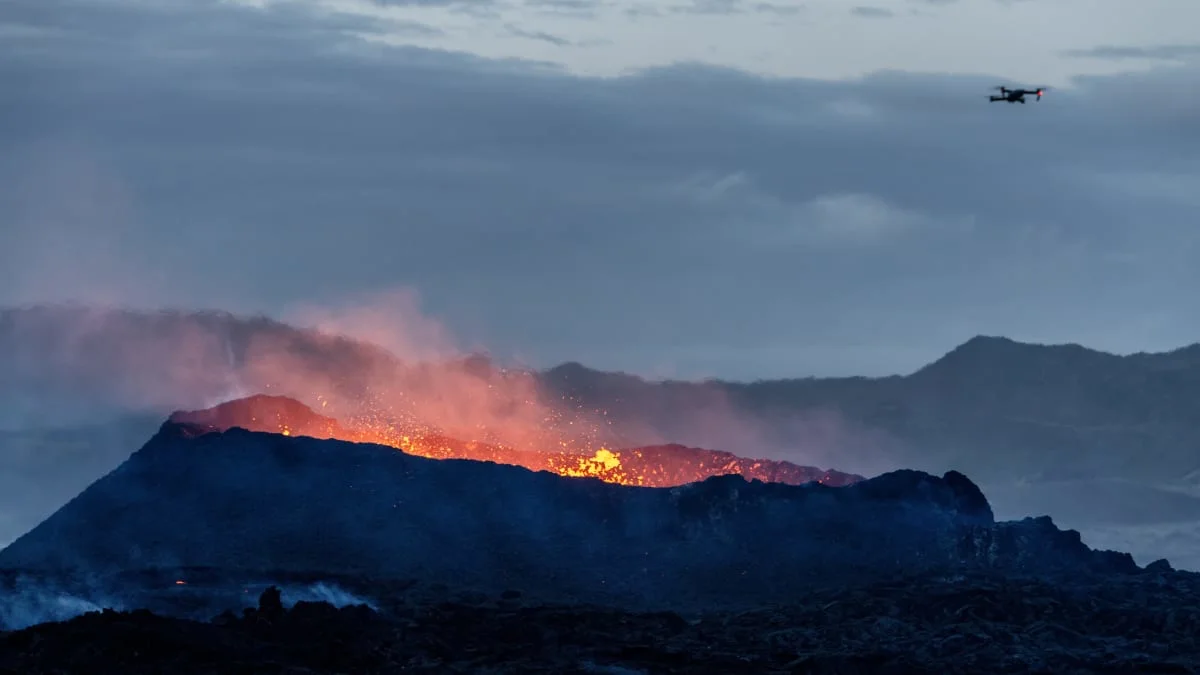
The newly formed and still erupting Litli-Hrútur volcano is only a half hour’s drive from the Keflavik Airport, but that doesn’t mean it is easy to get to. Since there is no public transportation to the eruption site, a rental car is your best option. According to visiticeland.com “there are two paid parking lots (P1 & P2), and the fee is 1,000 ISK (roughly $7.50) and is valid for 24 hours. Fees are paid electronically with detailed instructions at the lots. P2 parking is best for this hike.”
From the parking lot it is roughly a 20km or 12 mile hike to the eruption site, and there are no food or drink options nearby so plan accordingly. More information on the eruption site, as well as directions from Keflavik Airport as well as Reyjavik can be found at www.visiticeland.com or www.visitreykjanes.is.
Where to Stay in Iceland: Finding Your Home Away From Home
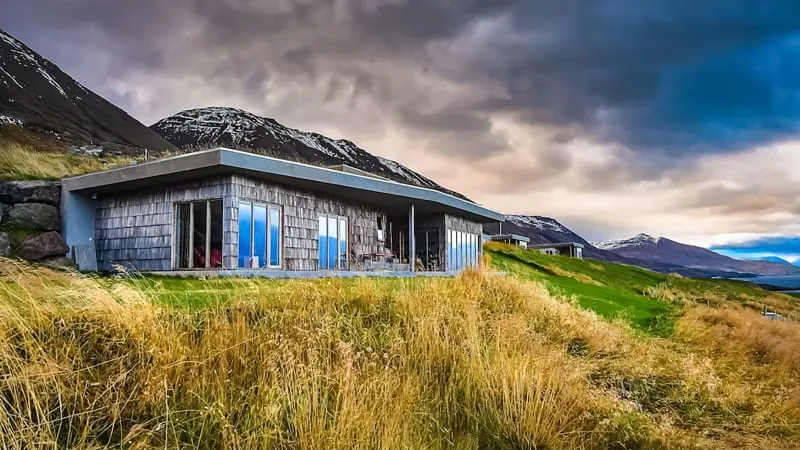
Iceland offers a plethora of accommodation options to suit every taste and budget. Whether you prefer the comforts of Iceland hotels, the coziness of guesthouses, or the camaraderie of hostels, you’ll find it all here. In Reykjavík, the capital city, you can immerse yourself in the vibrant culture and nightlife by choosing from a variety of hotels and guesthouses. For those seeking tranquility, consider staying in charming towns like Vik or Akureyri, where breathtaking natural wonders are just a stone’s throw away.
Venturing further into the countryside, you’ll find unique lodging options such as traditional Icelandic farm stays and remote cabins with stunning mountain views. These hidden gems differ from other hotels in Iceland, allowing you to disconnect from the hustle and bustle and immerse yourself in the serene beauty of Iceland’s landscapes.
What to See: Things to do in Iceland
Prepare to be captivated by Iceland’s diverse array of experiences. Start your journey by exploring the famed Golden Circle, featuring iconic sites such as the mighty Gullfoss waterfall, the erupting geysers at Geysir Geothermal Area, and the historic Þingvellir National Park. Adventure seekers will find solace in the breathtaking glaciers of Vatnajökull National Park or the mystical landscapes of Landmannalaugar, a geothermal wonderland in the Icelandic Highlands.
Photography enthusiasts will be in their element capturing the otherworldly beauty of Kirkjufell Mountain and the mesmerizing Diamond Beach, where icebergs glisten on black sands. Hikers will be drawn to the challenging but rewarding trails of Fimmvörðuháls and the incredible views from the summit of Snæfellsjökull volcano. And don’t miss the chance to witness the dancing lights of the Northern Lights during the winter months—a true celestial spectacle.
Exploring the Remote and Less Touristy Areas
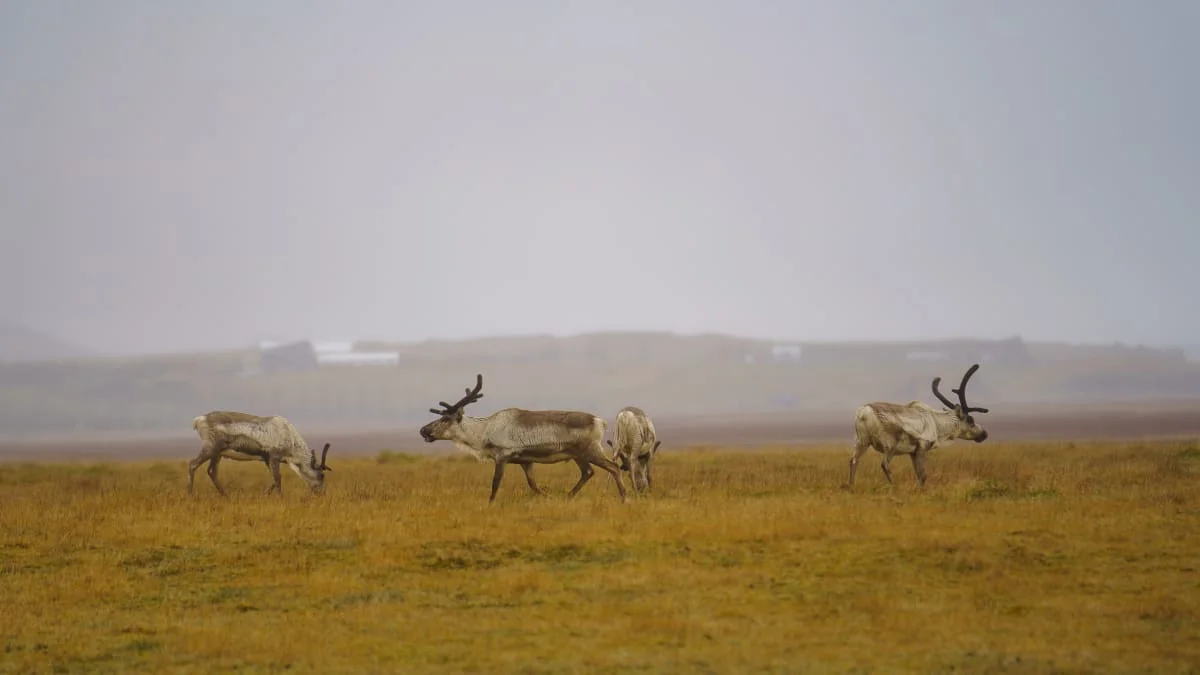
While Iceland’s popular attractions like the Golden Circle are undoubtedly stunning, consider venturing off the beaten path to discover the country’s lesser-known gems. The Westfjords, a remote and breathtakingly beautiful region, offer secluded fjords, rugged coastlines, and charming fishing villages. Additionally, the Eastfjords boast picturesque landscapes and a chance to spot Iceland’s reindeer population.
Embracing the Local Cuisine and Dining Scene
No visit to Iceland is complete without savoring its unique culinary offerings. Feast on traditional dishes like hearty Icelandic lamb stew, fresh seafood delicacies, and the infamous fermented shark. Don’t forget to try a hot dog from one of Reykjavík’s famed hot dog stands, a favorite among locals and visitors alike.
For a taste of local culture, explore the vibrant food halls and farmers’ markets, such as Reykjavík’s Grandi Mathöll and Hlemmur Mathöll. These venues showcase a variety of Icelandic and international cuisines, providing a delightful experience for food enthusiasts. And don’t turn your nose down at the food served at fuel stations throughout the island, which offer less expensive but still delicious sandwiches and other food options.
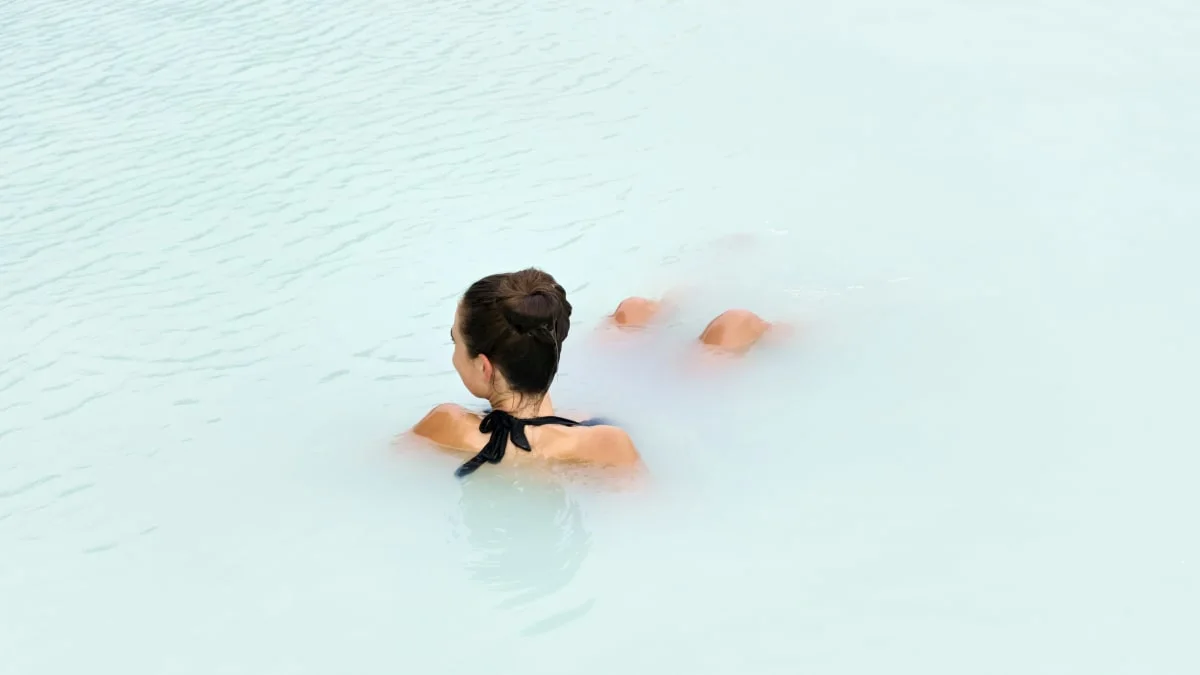
Chasing Waterfalls and Soaking in Hot Springs
Iceland is home to an abundance of mesmerizing waterfalls, each with its own unique charm. Plan a road trip to visit Seljalandsfoss and Skógafoss waterfalls along the South Coast, where you can even walk behind the cascading waters of Seljalandsfoss. Venture to the lesser-known but equally enchanting Glymur waterfall, nestled east of the Hvalfjörður fjord.
To unwind and relax, indulge in the country’s famous geothermal hot springs. Visit the Blue Lagoon for a rejuvenating soak in its mineral-rich waters or explore the more secluded and natural hot springs like Seljavallalaug and Reykjadalur, which offer an authentic Icelandic experience. If you’re staying in Reykjavik, Sky Lagoon offers a relaxing spa experience right alongside the ocean.
Awe-Inspiring Wildlife Encounters
For wildlife enthusiasts, Iceland offers a range of captivating encounters. Embark on a thrilling whale-watching tour from Reykjavík, Husavík, or Akureyri, and witness these majestic creatures swimming in their natural habitat. The shores of Iceland are also teeming with birdlife, including puffins, terns, and other seabirds. Take a boat trip to the remote island of Papey or the Westman Islands for close-up views of puffin colonies.
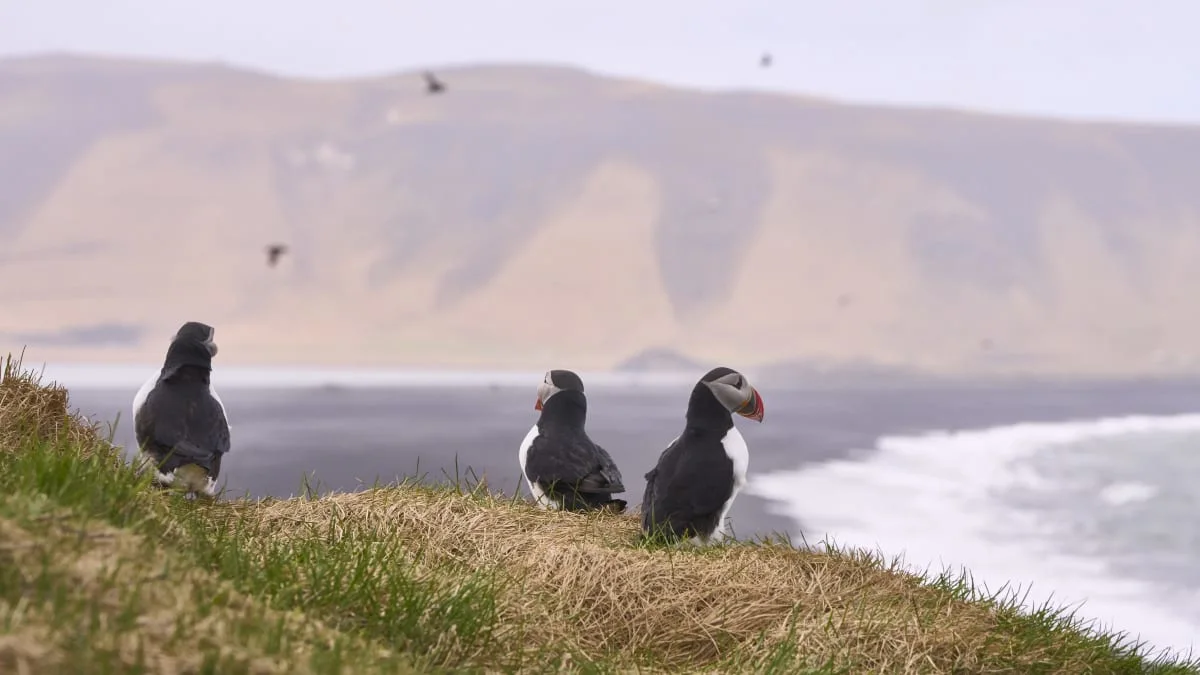
The Art and Culture of Iceland
Immerse yourself in Iceland’s rich artistic and cultural scene by visiting museums and art galleries. The National Museum of Iceland and the Reykjavík Art Museum offer insights into the country’s history and contemporary art. For a taste of local creativity, explore the myriad of independent art galleries and studios in Reykjavík, where you can discover unique pieces of art and handcrafted souvenirs.
What to Pack/Bring Along: Be Prepared for Every Adventure
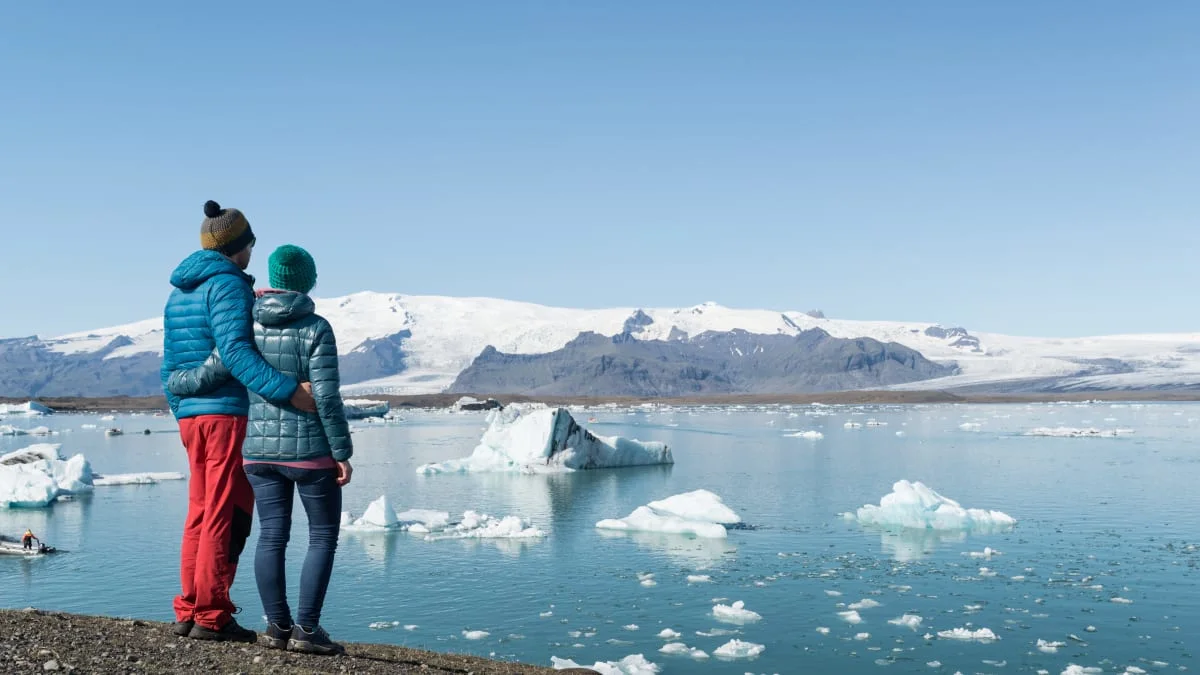
For a hassle-free Icelandic adventure, packing the right essentials is key. Here’s a list of must-haves:
Layered Clothing: Iceland’s weather can be unpredictable, so pack layers to adapt to changing conditions.
Waterproof Gear: Embrace the elements with waterproof clothing and sturdy boots for outdoor explorations.
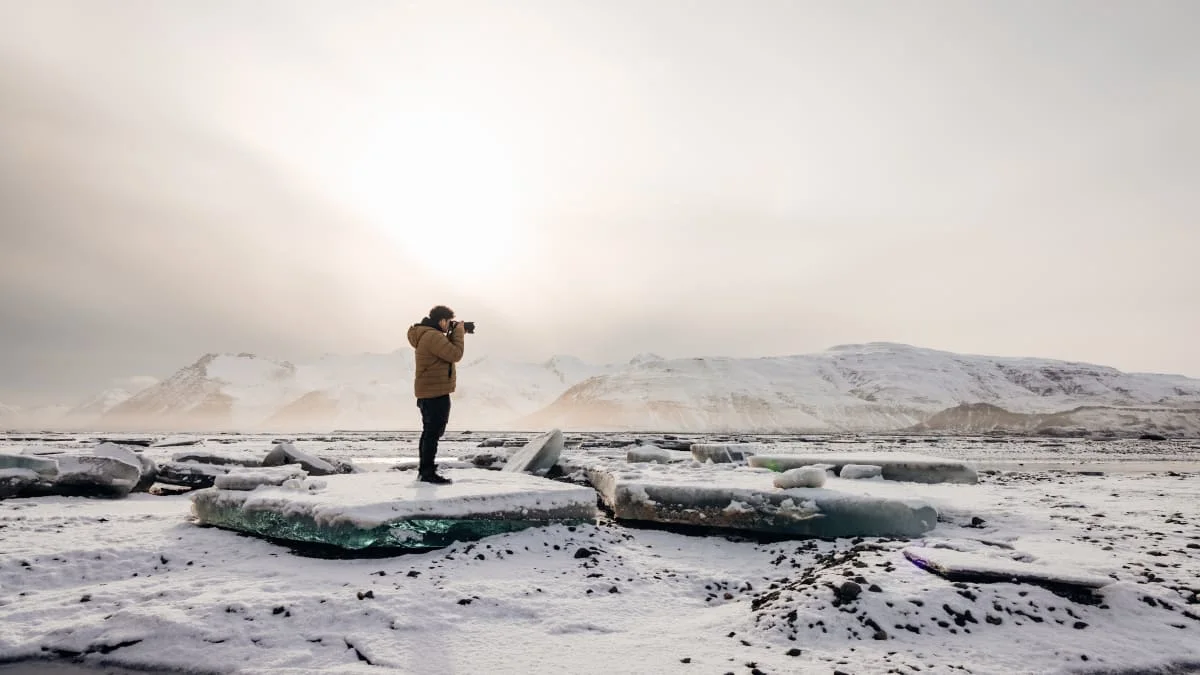
Camera Gear: Capture every stunning moment with your camera and any other photography equipment you prefer.
Hiking Gear: If you’re planning to hike or explore remote areas, bring along hiking gear like a hydration bladder and a reliable backpack.
Swimwear and towel: Take a dip in the soothing geothermal pools scattered across the country.
Travel Adapter: Ensure you have the right adapter for Icelandic power outlets. Do not attempt to plug an American power strip into one of these units.
Reusable Water Bottle: Stay hydrated and reduce plastic waste with a reusable water bottle.
Credit Cards: While having some cash on hand is always useful for smaller establishments, credit cards are widely accepted throughout the country. There are plenty of places to exchange currency at the airport, though it is easiest to visit the Arion Bank currency exchange at KEF.
Snacks and Water: Carry energy-boosting snacks and a refillable water bottle to keep you fueled during your explorations. These can be found at any of the plentiful grocery stores or gas stations throughout the island
Sunscreen and Sunglasses: The sun can be intense in Iceland. Protect your skin and eyes with sunscreen and sunglasses.
Medications and First Aid Kit: Pack any essential medications and a basic first aid kit for minor injuries.
Binoculars: Enhance your wildlife watching experiences by bringing binoculars to spot elusive creatures like reindeer, whales, arctic foxes and puffins.
Comfortable Shoes: Opt for comfortable, waterproof shoes suitable for walking on various terrains.
Travel Insurance: Ensure you have comprehensive travel insurance that covers outdoor activities and any potential emergencies.
Iceland is a land of enchantment and wonder, where breathtaking natural beauty awaits at every turn. Whether you’re traversing the iconic Golden Circle, chasing waterfalls, or soaking in the soothing geothermal waters, every moment in Iceland is an opportunity for discovery and awe. As you explore this extraordinary country, embrace the freedom of the open road and the thrill of unexpected encounters with wildlife. With its diverse range of experiences and breathtaking vistas, Iceland promises an adventure of a lifetime.
So pack your bags, embark on this Icelandic journey, and create memories that will stay with you forever. No matter your interests, travel style, or companions, Iceland welcomes all with open arms. Get ready for a truly unforgettable experience that will leave you longing to return to this magical land of fire and ice.
When is the best time of year to visit Iceland?
The best time to visit Iceland is during the summer months, which is from June to August. This period offers milder temperatures, longer daylight hours, and better accessibility to remote areas due to the opening of highland roads. The stunning Icelandic landscapes, including waterfalls, glaciers, and geysers, are easily accessible, and you can enjoy outdoor activities under the midnight sun.
When can you see the Northern Lights in Iceland?
The Northern Lights, also known as the Aurora Borealis, can be seen in Iceland during the winter months, from September to April. The darkest months, typically from November to February, are generally the best time to catch this mesmerizing natural phenomenon. It’s essential to escape areas with light pollution and look for clear, cloudless nights to have the best chance of witnessing the dancing lights in the sky.
What language is spoken in Iceland?
The official language spoken in Iceland is Icelandic, often referred to as the “Icelandic language.” It’s a North Germanic language that has remained remarkably unchanged for centuries, making it one of the oldest living languages in the world. While English is widely spoken and understood in tourist areas, learning a few Icelandic phrases can enhance your travel experience and show appreciation for the local culture and customs.
What currency do they use in Iceland?
The official Iceland currency is the Icelandic króna, denoted by the symbol “kr” or “ISK.” The Icelandic króna is commonly used for all transactions within the country, and it’s recommended to have some cash on hand when traveling to more remote areas where credit cards might not be accepted as widely. Major credit and debit cards are widely accepted in most establishments throughout Iceland.
Author’s Note: Before you depart on your Icelandic adventure, be sure to check for any travel advisories and entry requirements related to COVID-19. Additionally, be respectful of Iceland’s delicate ecosystems and follow Leave No Trace principles to preserve the country’s natural beauty for generations to come. Safe Travels!







